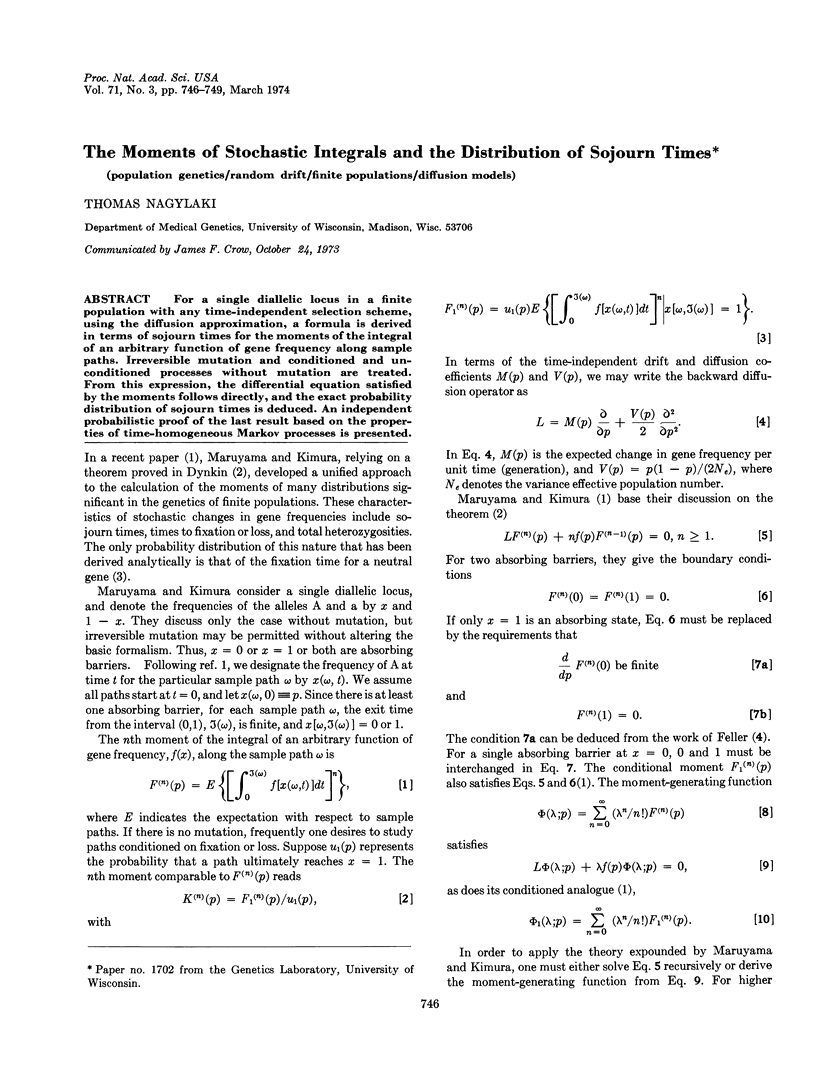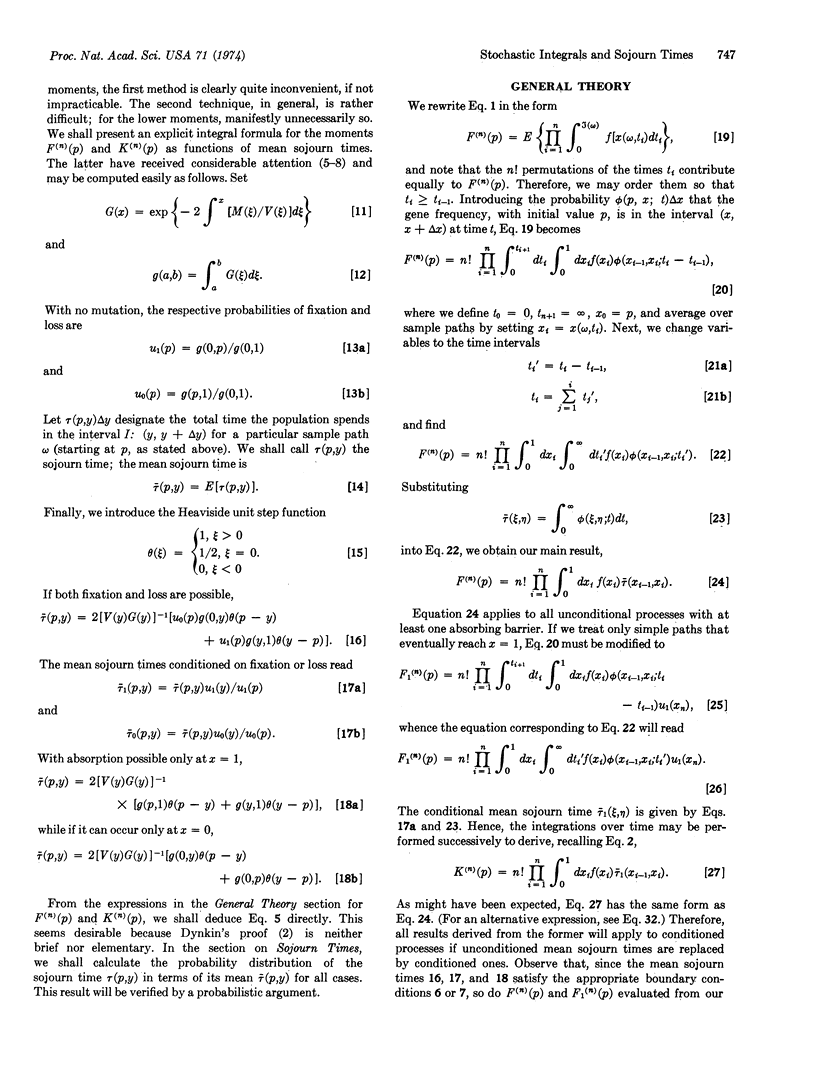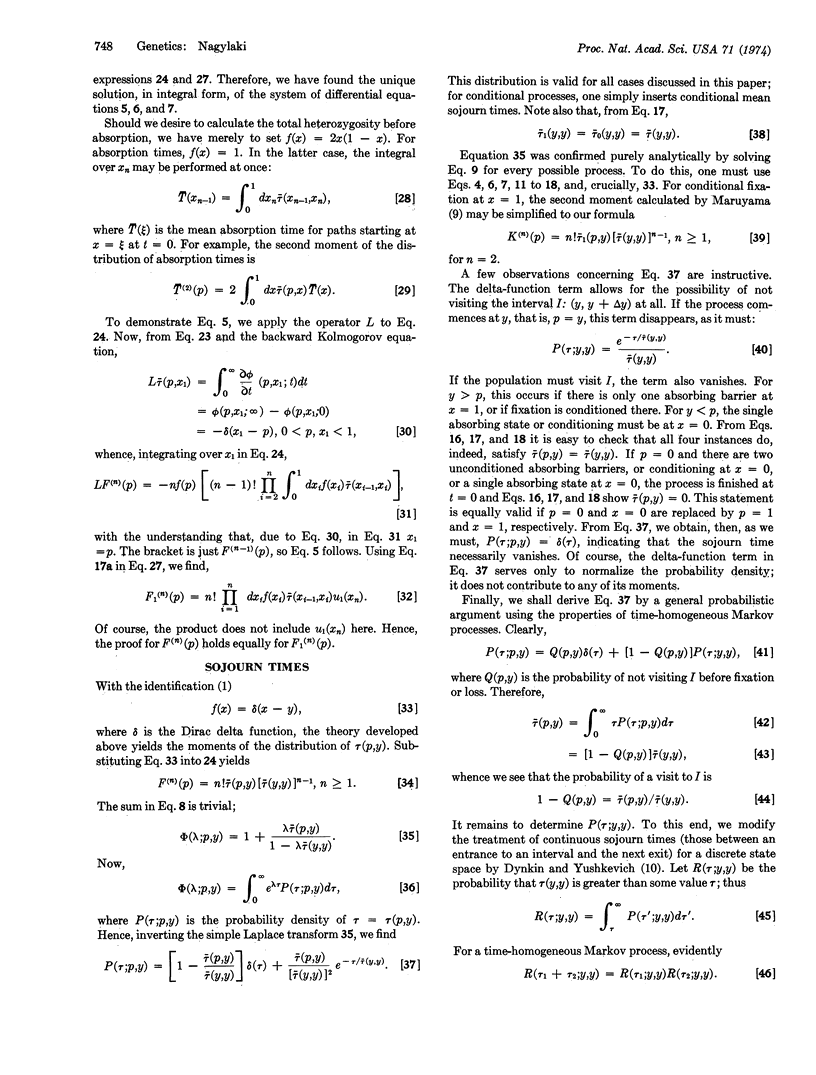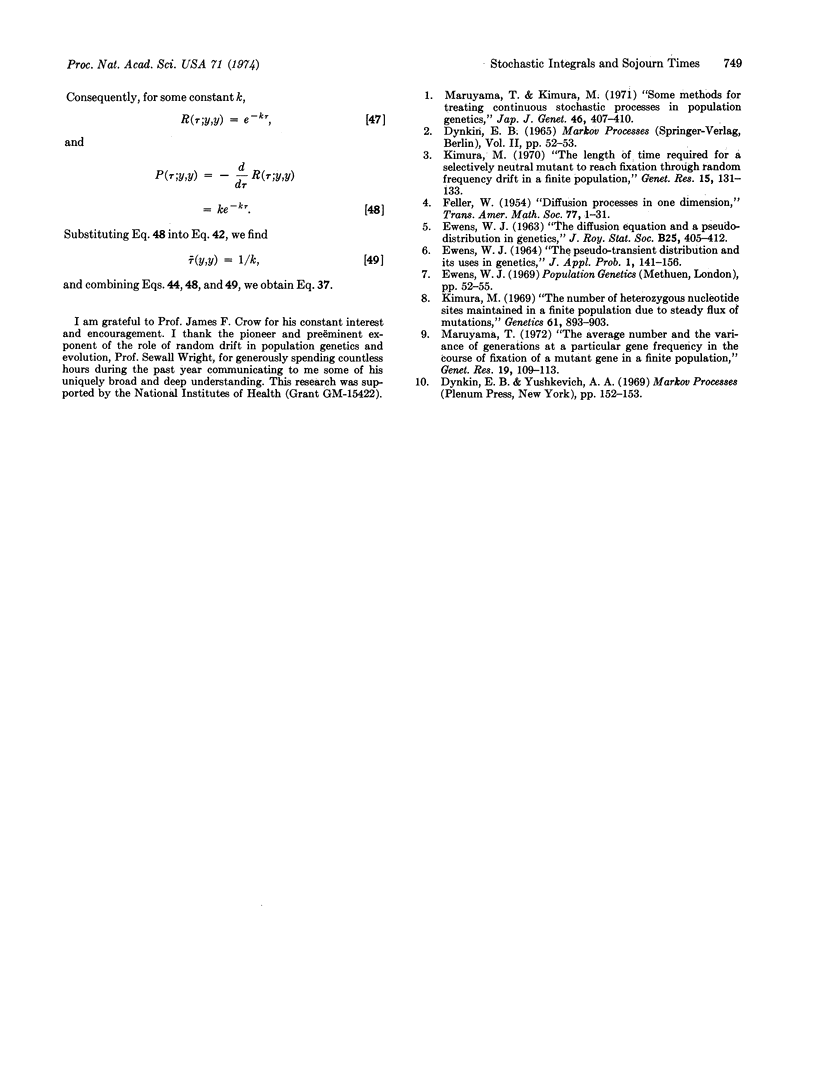Abstract
For a single diallelic locus in a finite population with any time-independent selection scheme, using the diffusion approximation, a formula is derived in terms of sojourn times for the moments of the integral of an arbitrary function of gene frequency along sample paths. Irreversible mutation and conditioned and unconditioned processes without mutation are treated. From this expression, the differential equation satisfied by the moments follows directly, and the exact probability distribution of sojourn times is deduced. An independent probabilistic proof of the last result based on the properties of time-homogeneous Markov processes is presented.
Keywords: population genetics, random drift, finite populations, diffusion models
Full text
PDF



Selected References
These references are in PubMed. This may not be the complete list of references from this article.
- Kimura M. The length of time required for a selectively neutral mutant to reach fixation through random frequency drift in a finite population. Genet Res. 1970 Feb;15(1):131–133. doi: 10.1017/s0016672300001439. [DOI] [PubMed] [Google Scholar]
- Kimura M. The number of heterozygous nucleotide sites maintained in a finite population due to steady flux of mutations. Genetics. 1969 Apr;61(4):893–903. doi: 10.1093/genetics/61.4.893. [DOI] [PMC free article] [PubMed] [Google Scholar]
- Maruyama T. The average number and the variance of generations at particular gene frequency in the course of fixation of a mutant gene in a finite population. Genet Res. 1972 Apr;19(2):109–113. doi: 10.1017/s0016672300014324. [DOI] [PubMed] [Google Scholar]


